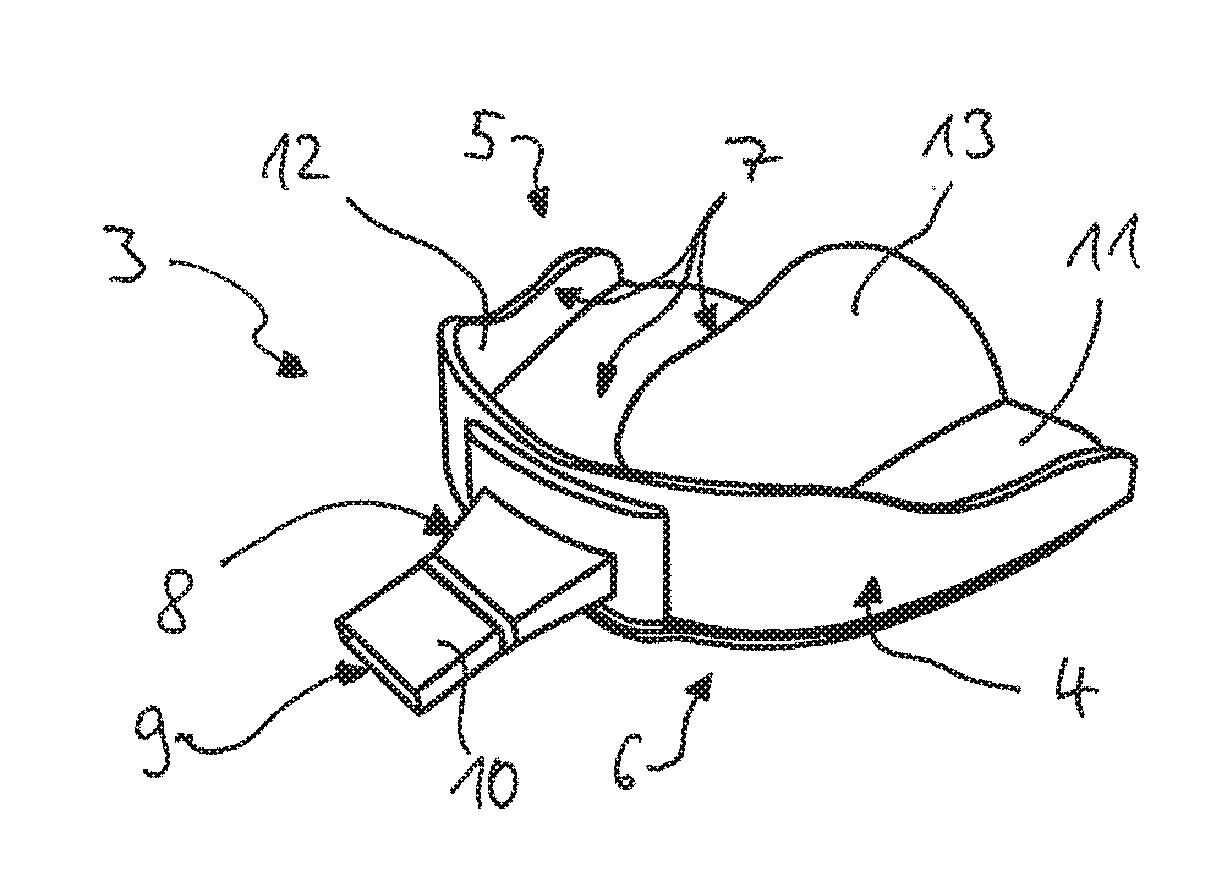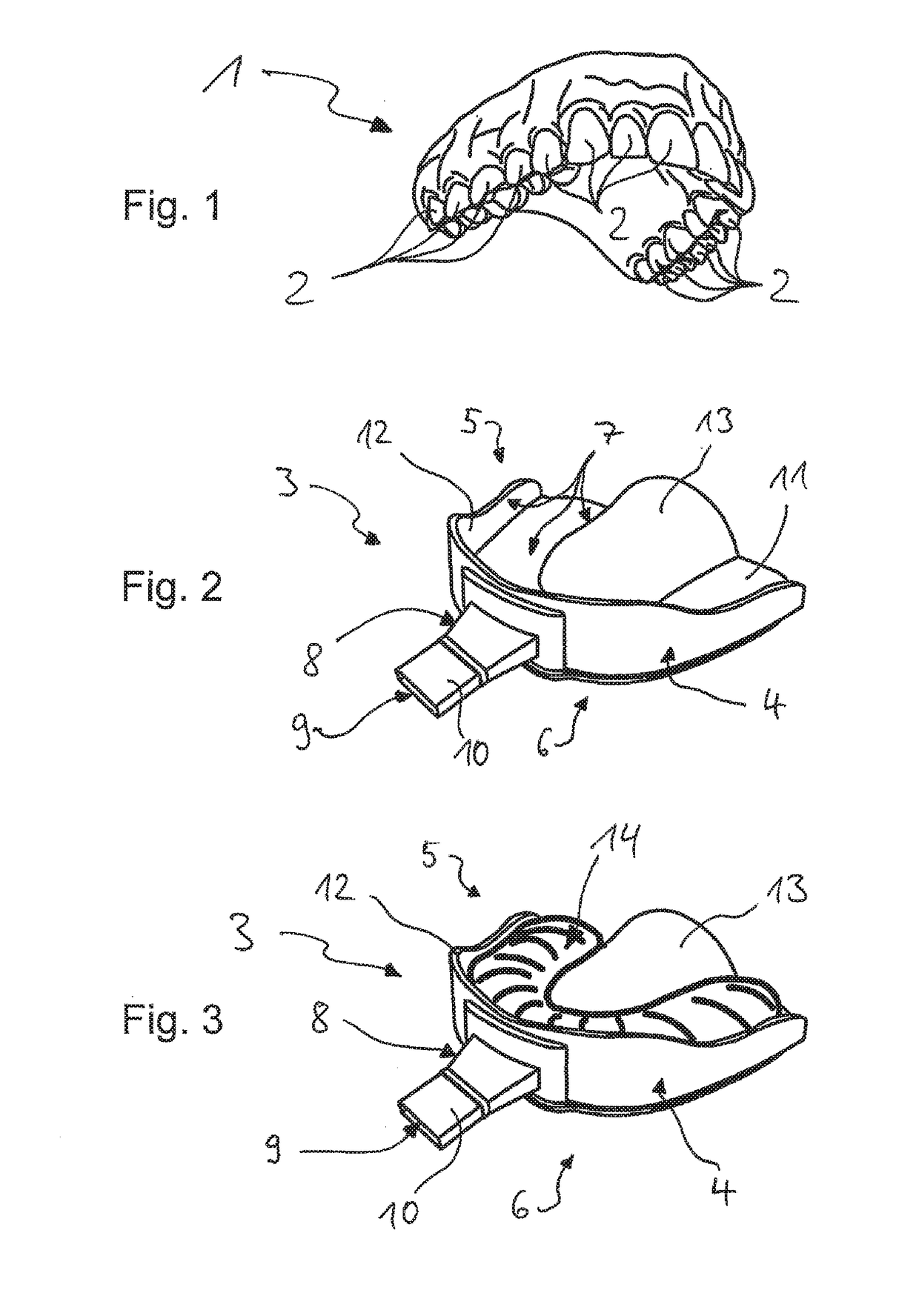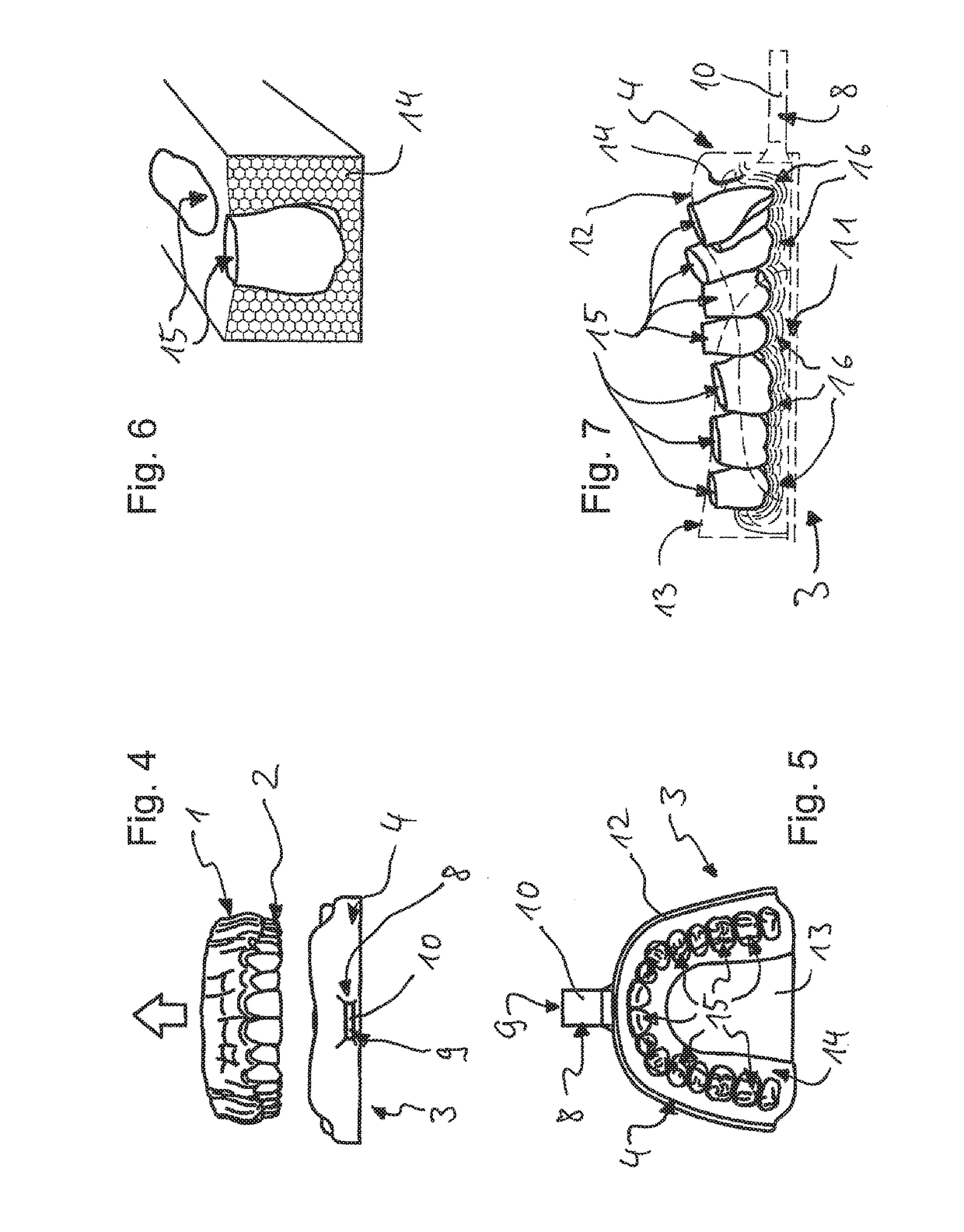Impression tray, and method for capturing structures, arrangements or shapes, in particular in the mouth or human body
- Summary
- Abstract
- Description
- Claims
- Application Information
AI Technical Summary
Benefits of technology
Problems solved by technology
Method used
Image
Examples
Embodiment Construction
[0132]On the basis of the exemplary embodiments and examples of use that are described below and represented in the drawing, the invention is explained in more detail merely by way of example, i.e., it is not restricted to these exemplary embodiments and examples of use or to the respective combinations of features within individual exemplary embodiments and examples of use. Method and device features are also respectively obtained by analogy from descriptions of the device and method.
[0133]Individual features that are specified and / or represented in connection with actual exemplary embodiments are not restricted to these exemplary embodiments or the way in which they are combined with the other features of these exemplary embodiments, but may, to the extent that is technically feasible, be combined with any other variants, even if they are not treated separately in the present documents, and in particular with features and configurations of other exemplary embodiments.
[0134]The sam...
PUM
 Login to View More
Login to View More Abstract
Description
Claims
Application Information
 Login to View More
Login to View More - R&D
- Intellectual Property
- Life Sciences
- Materials
- Tech Scout
- Unparalleled Data Quality
- Higher Quality Content
- 60% Fewer Hallucinations
Browse by: Latest US Patents, China's latest patents, Technical Efficacy Thesaurus, Application Domain, Technology Topic, Popular Technical Reports.
© 2025 PatSnap. All rights reserved.Legal|Privacy policy|Modern Slavery Act Transparency Statement|Sitemap|About US| Contact US: help@patsnap.com



